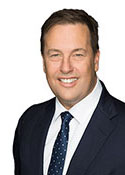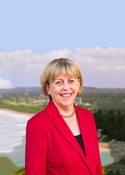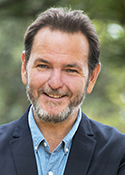Mackellar
Margin: Liberal 18.8%
Region: North Shore, New South Wales
Outgoing member: Bronwyn Bishop (Liberal)
In a nutshell: The blue-ribbon seat of Mackellar was a focus of attention ahead of the election as Bronwyn Bishop was dynamited out for Liberal preselection.
Candidates in ballot paper order

|
LIAM GAVIN JIM BALL MIKE HALL ANNIE WRIGHT JASON FALINSKI RHONDA FUNNELL JULIE HEGARTY |
Mackellar covers blue-ribbon Liberal territory on Sydney’s northern beaches, and has been held by the party since the electorate was created in 1949. After one of the highest profile preselection battles of recent history, the seat is to be vacated at the coming election by its member since 1994, Bronwyn Bishop. The electorate runs along the coast from Collaroy north to the Pittwater peninsula and inland to Duffys Forest and Frenchs Forest, and has not been affected by the redistribution. This area had previously been covered by North Sydney from federation until 1922, when from then until 1949 by Warringah. None of the relevant seats was ever held by Labor, whose closest margin in Mackellar was 5.2% when the Whitlam government came to power in 1972. Bishop is only Mackellar’s third member, her predecessors being Jim Carlton from 1977 to 1994 and William Wentworth from 1949 to 1977.
Bronwyn Bishop was first elected as a Senator in 1987, and rose to fame in 1992 with a blunderbuss assault on Trevor Boucher of the Australian Taxation Commission during a committee hearing. It was with an eye to the prime ministership that she moved to Mackellar at a by-election in March 1994, but her prestige took a serious knock when she took the Liberal primary vote 4.4% backwards despite the lack of a Labor candidate, with 23.1% of the vote going to the late pro-Labor writer and commentator Bob Ellis, who ran as an independent. Bishop served in junior ministry positions in the early Howard years, but her standing suffered when she oversaw the kereosene baths affair as Aged Care Minister in 2000, so named for a treatment for scabies that had been used in a Melbourne nursing home.
An ambition to become Speaker appeared to sustain Bishop’s political career after Labor came to power in 2007, so there was some surprise when Tony Abbott found a place for her in the shadow outer ministry when he came to the leadership in December 2009, notwithstanding Abbott’s description of himself as “the ideological love-child of John Howard and Bronwyn Bishop”. She was duly elevated to the Speakership when Abbott led the Coalition to power in September 2013, and was universally acclaimed as the most brazenly partisan occupant of the post in living memory. Her tenure came to an end in August 2015 after a media firestorm over her chartering of a helicopter to attend a party fundraiser, and related acts of extravagance. Abbott stood by Bishop for a fortnight before her position became untenable, his hold on the leadership weakening all the while. Bishop rewarded Abbott by voting for Turnbull in the September leadership ballot, evidently being of the view that Abbott’s defence of her should have continued indefinitely.
Bishop’s first preselection battle came before the 2013 election, when she was challenged unsuccessfully by Jim Longley, who had been a minister in John Fahey’s state government amid a stint as member for Pittwater from 1986 to 1996. By the time she lost the Speakership she was 72, but she showed characteristic determination in insisting on another term in Mackellar. Seven challengers initially nominated, two of whom made it to the end of the process with substantial support: Jason Falinksi, former adviser to John Hewson and Barry O’Farrell, campaign manager to Malcolm Turnbull in Wentworth in 2004, and more recently the owner of a health care equipment business; and Walter Villatora, a party activist who spearheaded a campaign for preselection reforms principally favoured by the hard Right, and a close ally of Tony Abbott as the president of the Liberal Party’s Warringah branch.
Reports initially suggested that Bishop would be saved by her base of local support and backing from the Centre Right faction, although many conservatives were so angered by her support for Turnbull that they favoured the seat going to a moderate. Attitudes hardened after prominent local Dick Smith threatened to run as an independent if Bishop won preselection, and a poll was circulated showing he would easily defeat her. It was reported shortly before the ballot that Scott Morrison was signalling that the party leadership wished to see Bishop defeated. After the also-rans were excluded in the first round of the April 16 preselection vote, Falinski emerged with 40 votes to Bishop’s 37 and Villatora’s 12. The hard Right vote locked in behind Falinski after Villatora’s exclusion, and he prevailed over Bishop in the final round by 51 votes to 39.
Analysis by William Bowe. Read William’s blog, The Poll Bludger.


